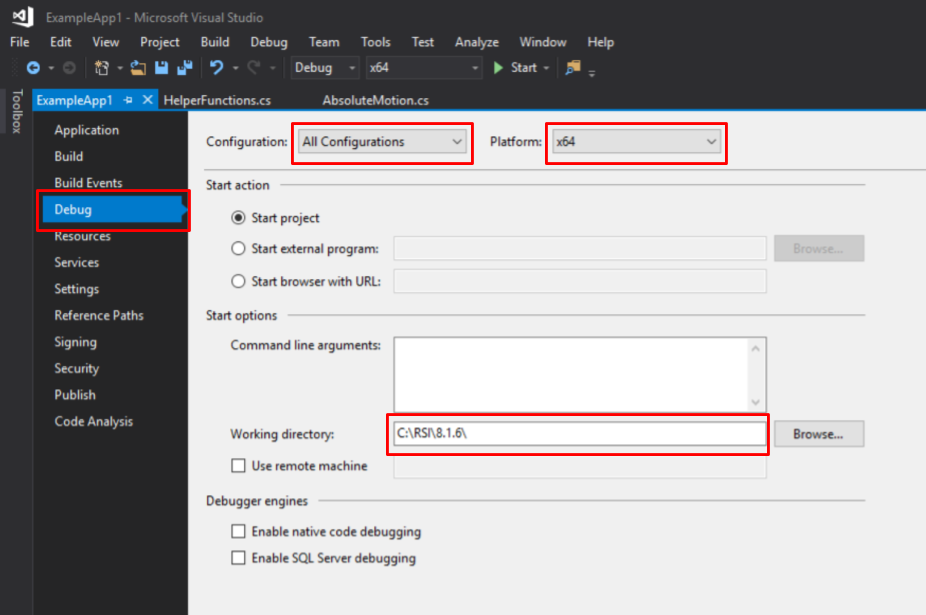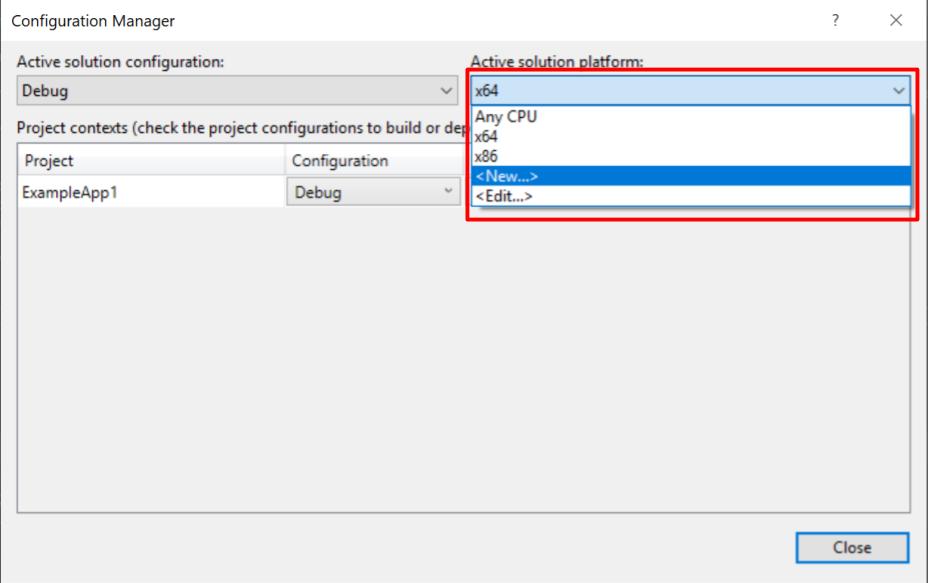
|
APIs, concepts, guides, and more
|

|
APIs, concepts, guides, and more
|
Learn how to run a sample app in C# using Visual Studio.
Our guides typically assume these IDEs, but the general steps provided should be applicable to any IDE you choose.
.png)
.png)
Specify the Name and Solution Name for your project, then hit OK.
.png)
.png)
Replace the contents of Program.cs with the following code.
Choose the F5 key to run the project. A Command Prompt window appears that contains the line:
.png)
What files do I need to setup my C# project?
*➡️ 32-bit**
RapidCode.NET.dll → [32bit] - .NET Framework 4.5 DLL
RSI.System.dll → [32bit] - (only if using the Axis XML API)
*➡️ 64-bit**
RapidCode64.NET.dll → [64bit] - .NET Framework 4.5 DLL
RSI.System64.dll → [64bit] - (only if using the Axis XML API)
In Solution Explorer (open on View Tab or hit ctrl+alt+L) right click on the name of your project, then click on Add, then click on Class for the Visual C# Items section.
.png)
Change the Name of your class to the name of the Sample App that you want to use and hit Add.
.png)
.png)
On the top menu click on Project, then click on Add Reference…
.png)
Once the Reference Manager window opens, browse for the
RSIQDNET4.dll file in your RapidSetup Folder, and click OK. (Make sure the checkbox is checked)
.png)
Verify that the RSIQDNET4 library has been added to your References.

Go to the Debug section. In the drop down select all configurations. Set platform to match that of your .dll file. Set the working directory to the location you installed RMP.

Select your platform
Open the platform Configuration Manager

Select the appropriate platform. If not available select <New...>

Replace the contents of AbsoluteMotion.cs with the following code.